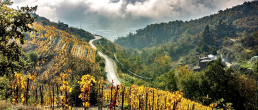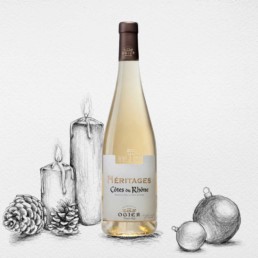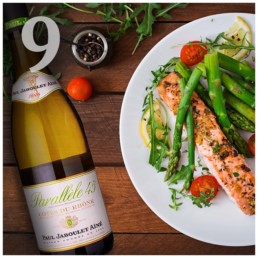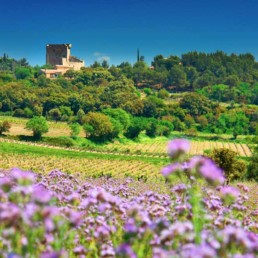Focus On: Côtes du Rhône
Two Regions in One – Robust Rhône Reds & Ultra Unique Whites
“Bold in fruit and spiced with Mediterranean garrigue, the sun-drenched wines of the Côtes du Rhône are the crowd-pleasing little black dress of the wine world.”
Wine Enthusiast, Anna Lee C. Iijima
Some of France’s wine regions sure have rock star status – Bordeaux, Burgundy, Chablis, or Champagne – but every wine lover also knows, when it comes to stretching your wine dollar, you really don’t need to look much further than the Rhône Valley. And we agree, here at D&N we like to say – “There’s no place like Rhône.”
But how familiar are you with all the wines of the vast Rhône Valley region? This large region’s vineyards are as diverse as they are plentiful. When most people think of the Rhône valley, they tend to think of show pony Châteauneuf-du-Pape or just your everyday quaffing Côtes du Rhône, but there’s SO much more to discover in this diverse and distinctive wine region. Our Focus On blog will give a little more insight into the region, as well as inspire you to branch out and try a few new bottles. Come explore this superb region and its many liquid jewels.
The Côtes du Rhône (CDR) Vital Stats
The rich wine region known as the Rhône Valley lies in south-eastern France, south of Beaujolais. Geologically speaking, it was created during the last ice age as the Rhône Glacier carved its way south from the Swiss Alps through what is now France. Today, the Rhône River meanders southward on this path for almost a thousand kilometres to empty into the Mediterranean Sea.
Côtes du Rhône itself is a massive wine region. In fact, it’s the second-largest appellation in France. Only Bordeaux has more hectares planted with vines. The entire region is about 44,000 hectares with 31,926 hectares under vine. Producing over 400 million litres of wine in the region annually. Translating to close to 200 Million dollars’ worth of wine being produced here every year. Not only is Côtes du Rhône one of the most productive appellations in all of France, but it’s also one of the oldest.
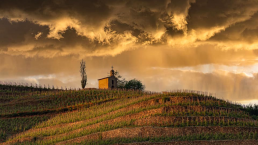
The Pope & His Wine - A Little Bit of History
The Rhône Valley has been a hub of wine culture since ancient times. Côtes du Rhône is among the oldest vineyard regions on the planet. Here’s the most simplified version of vineyard history imaginable: The first cultivated vines in the Rhône Valley were possibly planted around 600 BC, with Syrah and Viognier speculated to be the two most prominent grape varieties in the Northern Rhône. Some believe that Greeks brought the Syrah grape from the Persian city of Shiraz. Others say that the grape came from the ancient Sicilian city of Syracuse, where the Romans sailed from and up into the Rhône Valley with their precious cargo of Syrah and Viognier vines.
Whichever way you look at the history books, by the 1st Century, the Greeks had already begun producing wine near Marseille in the very Southern part of the Rhône Valley. In the North, the Romans planted vines along the crazy steep hills and started the first commercial vineyards in the region. When the Romans and Greeks left to do Roman and Greek ‘marauding things’ elsewhere, Rhône wine production took a bit of a hiatus until the 13th century.
The next big influence on the region occurred during the period from 1309 through 1377 when the Catholic papacy (under French Pope Clement V) moved to Avignon, France, from their traditional home in Rome. The residence became known as the “Châteauneuf-du-Pape” (CDNP), literally, the “new home of the Pope”. Due to his and subsequent Popes’ penchant for wine, extensive papal vineyards were planted and gave fresh impetus to a flourishing wine trade in the area.
Such was their success in making some darn good vins, the King in 1737 announced that all casks for resale should have the brand name C.D.R. (Côtes du Rhône) stamped on them. This was done in order to try to curtail wine fraud, because winemakers were claiming their wines came from the prestigious Châteauneuf-du-Pape area, but they were actually much lower quality wines from elsewhere in the region and the Pope didn’t want their brand to be tarnished.
Although regulations on the quality and production of Rhône Valley wines were introduced in the 17th century it wasn’t until 300 years later that the area received its first official recognition. Baron le Roy from the Châteauneuf-du-Pape vineyards, and something of a pioneer in the valley, obtained Appellation d’Origine Controlée (AOC) status for his wine in 1933. The appellation received full recognition by a High Court decision in 1937. These early rules for its Côtes du Rhône thus formed the basis of France’s nationwide AOC system.
Interesting Point: the origin of the famous branded CNDP bottle – in 1937, the union of the owners of the appellation of Châteauneuf-du-Pape, actually created the famous bottle with the embossed logo. This logo symbolizes a papal tiara placed above the keys of St. Peter with the inscription: “Châteauneuf-du-Pape contrôlé” written in Gothic letters around this emblem. Again, with the same purpose to protect their wine ‘brand’ as the Popes had done centuries earlier.
Fun Fact: Over time, Roman Catholic Popes became so enamoured with pairing Côtes du Rhône wines with food, they frequently shipped the wines to stock up their Cellars at the Vatican in Rome.
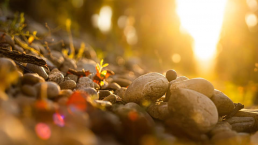
The ‘Cerebral’ North Vs. the ‘Sturdy’ South
Although we often talk about the wines of the Rhône Valley as a single entity, the Northern and Southern regions are very different. The immensity of this celebrated wine region in reality, has meant it has always been divided both geographically and stylistically. The North is separated from the South by a 30-kilometre stretch from Valence to Montelimar of green lush countryside where there are no vines at all.
Not only is the North (known as septrionale in French) much smaller and more densely planted than the South, but also its climate is continental, hot summers and very cold winters. Northern Rhône is also deeply terroir-driven which could be seen as a natural extension of Burgundian philosophies and so is largely responsible for the most prestigious crus meanwhile the south (with some exceptions) is most important in terms of volume.
The differences continue – in the North the only permitted red grape variety is Syrah. With Syrah as the ‘leading man’ of the North, Grenache is definitely the ‘party boy’ in the South and forms the foundation of the southern area’s popular blends, especially the classic GSM (Grenache Syrah Mourvèdre). You’ll also encounter Cinsault, Counoise, Carignan, with the whites of Grenache Blanc, Marsanne, Roussanne, Clairette, Bourboulenc and a host of other minor players.
The South (méridionale) has a distinctly Mediterranean climate, which is accompanied periodically by the cold and persistent Mistral wind. Further defining this area is that some traditional viticultural practices are more akin to those of Italy than France. However, you could say what unites the two into a single wine region is the river itself, a mighty, continuous presence, and the sultry spirit of the wines.
In the last 30 years, the region has seen a resurgence in demand as its reputation has been enhanced with serious quality producers such as Ogier, Jaboulet, Jamet, Rostaing, Guigal and many others making astounding wines through meticulous viticulture and thoughtful winemaking.
Totally over-simplifying things here, but wine not. In a nutshell – when it comes to understanding the wines from each region, due largely to the climate and their terroirs, in the northern Rhône, the wines are more acidic, tannic, and intense, while wines in the Southern Rhone are rounder, more generous, approachable earlier and more fruit-forward.
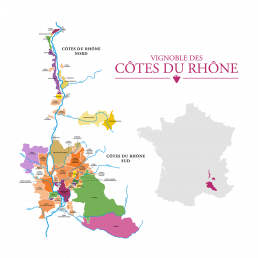
Fun Fact: Every 13 seconds, a bottle of Rhône Valley AOC wine is enjoyed somewhere in the world.
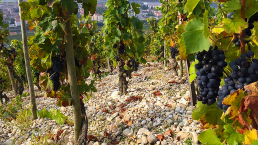
Close Up - The Northern Rhône
If a cowboy movie were set in wine country, the Northern Rhône would be the ideal location. Most Northern vineyards occupy dry, scraggy, terraced hillsides rising steeply above small towns perched along the Rhône River. Old gnarled vines grow in burnt looking earth. The vineyards look rustic and somewhat primitive. In a sense the vineyards reflect the taste of the wines – dry, concentrated, a bit tough, gritty of spirit. These red wines are born of challenging conditions but endure and blossom after years in the bottle. They do vary obviously, some being lighter and smoother, others being fuller and more intense – but they’re all of the same mold. Thanks to the dominant grape – Syrah.
Strength and power meet balance and elegance in wines from the Northern Rhône. This is considered the “spiritual home” of Syrah. It may not be the exact epicentre of where the first Syrah vine appeared, however it is the benchmark by which all other Syrah wines are measured. It’s a fascinating region to try to understand.
Although Northern Rhône wines tend to be more prestigious than those of the Southern Rhône (with the exception of the highly regarded wines of Châteauneuf-du-Pape), the Northern Rhône is responsible for less than 5% of wines produced in the region. Yet these northern vineyards produce wines of the highest reputation and often, the highest prices.
As the locals say, “Syrah likes a view,” so if you happen to see the wine is coming from a hilly vineyard, it’s going to be a pretty sure bet.
The valley in the Northern Rhône is narrow and vineyards are planted on terraced steep slopes close to the river on granite and schist; the best sites have a south-facing aspect. Viognier, Marsanne, and Roussanne are the only white varieties permitted, thriving in a Continental climate with warm temperatures. In fact, the river helps to moderate the climate by warming the slopes and reflecting sunlight up to the vines. The mistral winds from Switzerland pick up speed as they head towards the Northern Rhône and dry the climate and help prevent mildew and other moulds.
Let’s explore the Northern Rhône region from top to bottom and give you some intel to find exquisite Rhône wines on your own. Here are the eight crus in the region:
Côte-Rôtie – or “roasted slope” is one of the most important French appellations for Syrah. Côte Rôtie is stereotypically distinguished from Hermitage by its perfume. The best wines offer up flavours of black raspberry, black currant, violet, and chocolate along with savoury hints of olive, bacon fat, white pepper, and powerful charcoal smoke. They are bold yet precise with fine-grained tannins. What defines the greatest wines from Côte Rôtie is the vineyard’s position on steep southern-facing slopes that are protected from northern winds. The most famous distinction within Côte-Rôtie is between the Côte Brune (‘brown slope’), and the southern vineyards, called Côte Blonde. The Côte Brune has clay-based, iron-rich, dark schist soils producing the boldest wines that are often tannic and austere and need more time to develop in the bottle. This terroir is primarily in the centre and north of the appellation. In the centre and south, you’ll find more sandy-granite soils of the Côte Blonde producing more floral aromatics, elegant, and readier to drink sooner wines.
“Condrieu is a temple to Viognier.”
Decanter, Matt Walls Rhône Specialist
Condrieu – The largest white wine appellation in the Northern Rhône produces rich, opulent wines made with 100% Viognier. You can expect rich oily flavours of tangerine, papaya, lime peel, and green almond with rich toasted oak notes of gingerbread, macadamia nut, and allspice. Due to the primarily clay-and-decomposed granite soils, Condrieu wines are often plump with lower acidity and thus are best enjoyed within 2–6 years of release.
Château Grillet – It is unusual among France’s wine appellations, not only for being one of the smallest in terms of geographical area, but also for being one of very few to be occupied only by a single producer. Château Grillet is made entirely from Viognier. These wines express a little less ripe fruit than Condrieu with notes of white peach along with a smoky hint of gunpowder and butterscotch. The wines have lower acidity, like Condrieu, so it’s usually best to drink them within a few years of release.
St. Joseph – This appellation produces both red wines made mainly from Syrah (91%) and white wines (9%) made from Marsanne and Roussanne. The wines of St.-Joseph range in taste from spicy flavours of black olive and black pepper to richer, more complex wines similar to those found in Côte Rôtie. There can be a dramatic difference in concentration and quality between the wines made on difficult terraces just above Tournon and those from the much flatter land. There’s also quite a change of soils from the northernmost part of the appellation to the south. In the north, there are many of the same clay-granite soils, as are found in Condrieu or Château Grillet. Meanwhile, in the southern part of Saint-Joseph, there are more thin soils of marl (clay + lime) and acidic granite. These wines tend to get a bit spicier and fresher as well as more floral (in this case like black peppercorn); due to the spice, it’s fun to seek out something a little older to try. The white wines from the region are also well worth a try with the medium-bodied flavours of lemon, pear, quince, honeycomb, and orange zest and a long subtle herbal finish. They often have quite a rich, bold aroma that’s just fun to sniff.
[St. Joseph has] “Some of the best values of the Northern Rhône”
Crozes-Hermitage – Produces both red and white wines. Around 92% Syrah and 8% White from Marsanne/Roussanne blends. The largest appellation in the Northern Rhône, Crozes-Hermitage wines range in quality from simple food wines to awesome Syrah. The major difference you’ll see here is in tartness due to Crozes-Hermitage’s position on the East bank of the river. While this doesn’t at all affect the east-facing and southern facing sloped vineyards in the region (which are known for outstanding wines), facing west tends to deliver more dried herbal notes and tobacco (and less fruit) in the Syrah. Still, the wines here are quite perfumed with polished notes of violet and fresh berries along with keen acidity and tannin. Many vineyards in the region are on pebble-covered terraces with granite-clay soils with a blend of sand (sand usually bumps up the floral aromatics and also seems to lighten the colour).
Hermitage – is produced further downriver on a bare suntrap of a hill on the left bank above the town of Tain. The hill of Hermitage is famous for its emboldened Syrah wines that usually need around 5–10 years before you open them. When you do, you’ll be greeted with heady aromas and layered flavours: blackberry, black currant, liquorice, coffee, candied cherry, and smoke. Besides Syrah, the hill also produces some outstanding age-worthy white wines that are a blend of Marsanne and Roussanne. Wines from L’Ermitage do not come cheap for two reasons: one, the wines are consistently ranked as the best in the Northern Rhône, and two, Hermitage has a storied history, which can make tasting these wines feel a bit mystical.
The vineyards on Hermitage Hill, which are more like a set of three adjacent south-facing hills, have been planted since the times of ancient Greece in 500 B.C. The popular story of Hermitage, though, is of a 13th century (1200’s) crusader who was wounded and sought refuge on the hill. He built a chapel and lived out his life in complete solitude. Thus, the hill was named “hermit’s hill” or Ermitage. Today, there is a tiny, reconstructed chapel on Hermitage called Saint-Christopher that sits alone towards the crest of the hill and looks out over the village below.
The soils of the three hills change from more granitic clay soils and some loess (windblown micro soils) to more sandy clay with stony glacial deposits. So, you can expect the wines from the more sandy/glacial soils to have a little less tannin out of the gate and probably be lusher and drinkable early on, whereas the granitic clay and clay/limestone sections should produce wines with more tannin and body. It will all depend on the producer (and what they do in the cellar) and the viticulture in the vineyard.
Then let’s not forget Hermitage Blanc – a blend of Marsanne and Roussanne. It’s a statuesque and exotic, dry and full-bodied, hugely characterful wine that never fails to seduce. It’s delicious when it’s young and it’s compelling when it’s old. At one time Hermitage’s white wines were equally as famous as the reds – and rightly so. Seek some out.
“Cornas is still an underappreciated appellation producing very worthy and eventually exciting Syrah reds.”
Jancis Robinson MW
Cornas – Produces only red wines exclusively from the Syrah grape. Typically, the boldest and most tannic of all the Northern Rhône Syrah wines, Cornas delivers tongue-staining flavours of blackberry jam, black pepper, violet, charcoal, chalk dust, and smoke followed up with grippy intense tannins. Most will recommend waiting about a decade for the tannins to soften and the wines to reveal more kirsch and liquorice flavours. However, some of the producers have started practicing more modern techniques to deliver a softer, smoother wine right on release. The highest-rated vineyards are up the hill behind the city of Cornas, where primarily granitic clay soils support steep terraces. As you move south of the city, the hills become shallower, and soils contain a lot more sand. As you can probably imagine, the sandy soils are capable of delivering the most approachable Cornas Syrah.
Top Tip: Traditionally Cornas wines needed 20 years to reach their best drinking, but today’s wines are now less ferocious when young – as it’s a relatively unsung wine, this can be easy-on-the-wallet quality buying!
Saint-Péray – is the southernmost appellation of the Northern Rhône and is a tiny valley located beyond a forested hill in front of the Rhône river. One of only two sparkling wine appellations in the Rhône region, sparkling wines comprise about one-third of the production, made with mostly Marsanne. If you talk to the producers of the Rhône, you’ll find they tend to prefer Marsanne to Roussanne for its citrus, floral, and beeswax flavours with balanced acidity. Most wines will contain nearly all Marsanne and a touch of Roussanne can add a lovely orange-rind like flavour to the blend. The best vineyards are on a limestone outcropping, which increases the longevity of these wines due to higher acidity.
Diois – The Diois district (the area around Die) is one of France’s more geographically isolated wine districts. Clairette de Die is an appellation for sparkling white wines from the area around the town of Die, in the low alpine foothills of the eastern Rhône Valley. It is one of only two sparkling wine appellations in the Rhône region (the other being Saint-Péray).
Mini Geek Talk – We talk a lot about “cru” in French wine designations – here’s the low down. A cru, which roughly translates to “growth” in French, specifies a legally demarcated region that’s recognized for its quality and distinctive terroir. Cru wines, labelled solely by their appellation, are the top dogs – the elite. They’re positioned above wider regional classifications like Côtes du Rhône or Côtes du Rhône Villages. This designation proves both a reward and challenge to winegrowers. It imposes strict yield limits and other laborious quality measures like hand harvesting. Gotcha!
“This is the region of France’s most user-friendly wines”
Jancis Robinson MW
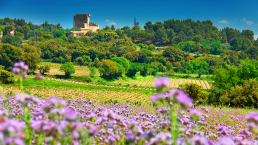
In the Spotlight - The Southern Rhône
In this warm region of sunshine, olive trees, and lavender, is where you’ll find some of France’s most user-friendly wines, and good value to boot. Côtes du Rhône is south-east France’s warmer, richer, spicier answer to the dry austerity of Bordeaux. The shape and topography of the Southern Rhône are completely different from that of the North. Here it’s a wide-open area with lots of flat land and gentle hills.
Like the terrain, the assortment of grape varieties in the Southern Rhône is wide open. We could say that this is the spiritual home of grenache and the art of blending which is central to the appellation’s identity. The Côtes du Rhône appellation lets winemakers choose from 21 varieties (mostly red blends) for these easy-drinking and food-loving wines.
GSM blends, comprised of Grenache, Syrah, and Mourvedre, are most common, though dozens of other red varieties are planted, including Carignan, Cinsault, Counoise, and more. And while Marsanne, Roussanne, and Viognier are also prevalent in the Southern Rhône, additional white varieties are permitted, including Clairette, Picpoul, Bourboulenc, and others. This is home to more than 5,000 producers, cooperatives and négociants making fantastic value wines.
While Côtes du Rhône can come from a vast area of around 140,000 acres around the southern end of the French Rhône Valley, Côtes du Rhône-Villages comes from a tightly defined area an eighth as big on particularly suitable land north and west of Châteauneuf-du-Pape. While Châteauneuf-du-Pape is the original cru of the Southern Rhône, advances in viticulture and winemaking have blurred the lines between the appellation and its lesser-known and less expensive neighbours.
Today, nine cru appellations span the region, each offering distinct wines that express the Southern Rhône’s varied terroirs. And with stunning vintages available, now is the perfect time to learn more then dive in and drink up.
Châteauneuf-du-Pape – With wines that showcase opulence juxtaposed to elegance, the deeply concentrated, beefy bottlings of Châteauneuf-du-Pape are the undisputed royalty of the Rhône’s southern cru. Foreign demand for them is so great that about 80% of the region’s wines are exported. The appellation is synonymous with its terroir of galets roulés, or rounded pebbles. Shaped by the flow of the Rhône river into flattened formations that range from the size of baseballs to basketballs, the stones lay atop subsoils of sand and clay throughout the region’s plateau. The formations store heat during the day, which warms the vineyard at night. Lesser-known limestone, gravel and sand terrains contribute to the region’s unique expressions, too.
Red Châteauneuf-du-Pape can be made from as many as 13 different grape varieties, including 4 white varieties. In modern practice, however, most reds come from 3 or 4 red varieties, Grenache, Syrah, Mourvèdre, and the balance made up by Cinsault, counoise or vaccarese. White Châteauneuf-du-Pape also exists. It may be made from six white varieties: Clairette, Grenache Blanc, Bourboulenc, Picpoul Blanc, Viognier and Roussanne. It is a dry full-bodied white with aromas and flavours of melon, pineapple and honey-like with an earthy, minerality.
Tavel – In Tavel, wine has always meant one thing: rosé. Long before it became the official beverage of Instagram and pool parties, French royalty and intellectuals swooned for the appellation’s bottlings. Beloved by King Louis XIV, Balzac, and Hemingway, Tavel wines are often shockingly pink, with hues that range from deep salmon to ruby. Tavel became the first French rosé appellation in 1937. It remains the only appellation in the Rhône exclusive to rosé. The style here is always bone dry and distinguished from its paler Provençal cousins by deeper fruit concentration and earthy complexities. They’re invigorating yet solid wines suitable for enjoyment beyond summer and can even benefit from cellar aging. A wide variation in varietal blends and three distinct soil types within the appellation—galets roulés, sand and limestone—further enhance complexity in these wines.
Lirac – Across the Rhône River from Châteauneuf-du-Pape, Lirac shares many of the same iconic galets roulés, sand and limestone soils. The terroir of Lirac is often hidden in the shadows of Châteauneuf-du-Pape! Designated a cru appellation in 1947, Lirac is rare in that it is authorized for production of red, white, and rosé wines. Much of Lirac’s production had been focused on easy-drinking rosé, though today, red wines make up 85% of its output. While Grenache is central to Lirac’s distinct blackberry character, winemakers have increasingly tapped Syrah and Mourvèdre as central blending components. The cru’s best red wines are notable for their perfume, savouriness, and complexity.
Gigondas – Characterized historically as a poor man’s Châteauneuf-du-Pape, Gigondas is an appellation often explained in comparison to its glossier cousin. Gigondas is often defined by luscious fruit, generosity, and spice. It’s typified, however, by a slimmer profile than the brawny wines of Châteauneuf-du-Pape, as well as an intoxicating pungency of garrigue, the rustic base notes of underbrush and herb found throughout the South of France. In 1971, Gigondas was the first of the Côtes du Rhône Villages appellations to be elevated to cru status. The wines offer remarkable affordability compared to ever-escalating prices for Châteauneuf-du-Pape.
A key factor that differentiates the cru is topography. Gigondas, along with neighbouring Vacqueyras and Beaumes de Venise, sits along the slopes of the Dentelles de Montmirail, a ragged limestone formation that towers above the Southern Rhône. The outcrops of the Dentelles protect against the morning sun and extend the growing season. Its altitude allows for a wide diurnal temperature range that maintains acidity and balance in the grapes.
Rasteau – Planted on predominantly south-facing slopes, Rasteau is characterized by profound ripeness and intensity. Grenache thrives in this arid, sun-drenched terrain, and a large proportion of 30–90-year-old vines continue to bear fruit year after year. Long considered one of the best regions of the Côtes du Rhône Villages, the appellation obtained cru status in 2010. The red wines of Rasteau are composed principally of Grenache, though they’re augmented by Syrah, Mourvèdre and a host of other minor blending partners. The appellation is also revered for its vin doux naturel, which means naturally sweet wines. These expressive fortified wines are produced from Grenache Noir, Blanc, and Gris.
Beaumes de Venise – Located at the foot of the Dentelles de Montmirail, Beaumes de Venise is a particularly warm appellation sheltered from the Mistral, the famously frigid northerly winds of the Rhône. Muscat thrives in the dry heat and arid soils here, and Beaumes de Venise is perhaps best known for its vin doux naturel. Unlike those of Rasteau, these are youthful, delicately fortified sweet wines made from the intensely floral, fruity grapes.
Vacqueyras – If Gigondas is the cousin of Châteauneuf-du-Pape, Vaqueyras might be Gigondas’ little brother. Rusticity is often used to differentiate the appellation’s wines from those of Châteauneuf-du-Pape and Gigondas. Yet, in recent decades, Vacqueyras has made great strides through improved vineyard and cellar standards. Compared to its powerful contemporaries, it’s sleek, fresh, and light on its feet. Located at the foot of the Dentelles, and adjacent to Gigondas, the vineyards of Vacqueyras are generally lower in elevation and warmer than their neighbours. While much of the cru is planted in what’s known as the garrigues, or flatlands covered with galets roulés, there are higher-elevation vines found on the region’s sandy slopes and stony terraces as well. Profiles vary with terrain, but, overall, the wines of Vacqueyras combine approachable fruitiness with elegance, bright acidity, and fine, persistent tannins.
Cairanne – Elevated to cru status in 2016, Cairanne is one of the Rhône’s newest and most promising appellations. Compared to the powerhouse wines typical to the Southern Rhône, the Grenache-based blends here often exhibit a distinct finesse. Wines from Cairanne have elegance with typically soft and supple tannins. The region’s soils vary from clay and limestone to sand and pebbles. This diversity of terroir is reflected in the wines. The reds can be fleshy and ripe, redolent of figs and wild strawberries, yet they are often well structured and offer spicy, savoury undertones.
Vinsobres – Located at the northern limits of the Southern Rhône, with hillside terraces at more than 500 metres above sea level, Vinsobres is one of the region’s coolest appellations. Vinsobres marks the beginning of the Alps. The vineyards here are always the last to be harvested. Calcareous soils and high altitude lend minerality and freshness. The red wines of Vinsobres, elevated to cru status in 2006, must be made up of 50% Grenache and include Syrah and/or Mourvèdre. Syrah grows well here, and it lends briskness and structure to the wine.
Next down the pecking order are the Côtes du Rhône Villages appellations. 95 communes across the region make Villages wines. And if you are hardcore enough to reduce your yield (how much wine your grapes actually produce) to a specific level (up to a maximum of 40 hectolitres per hectare) you can put the name of your commune on the label. Only 20 communes currently do this.
The third level is the one that represents most of the Rhone’s winemakers: AOC Côtes du Rhône. This is the largest AOC, accounting for two-thirds of Rhône’s production. Côtes du Rhône is a region-wide appellation for red, rosé, and white wines covering the entire Rhône Valley. It includes more than 171 communes making this standard of wine. That’s over 4,000 ‘vignerons’. And don’t go thinking there are no rules here. We’re in France after all.
Yet, there’s more. After these wines, there are countless Vins de France (VDF). VDF is a designation for quality table wine from France that has been in use since 2010, when it started to replace the former vin de table category. The concept—strikingly innovative at the time, allows vintners to blend wines from different regions and new combinations of grape varieties. Also, to label with the grape variety instead of a commune. The denomination was designed to free winemakers to create wines that are more accessible and user friendly in international markets. And it worked!
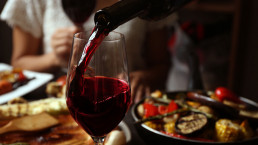
Enjoying Côtes du Rhône wine with...
Côtes du Rhône wines are extremely food-friendly and can be easy to match with a wide variety of foods. The sturdier red Rhone wines are great with roasts of beef or lamb, grilled steaks, stews, and full-flavoured game such as venison.
The lighter reds such as Crozes-Hermitage, St. Joseph, and Côtes du Rhône – are delicious accompaniments to roast chicken, BBQ burgers, or pizza. They are also perfectly paired with a wide variety of soft and hard cheese.
Enjoy Hermitage Blanc and Châteauneuf-du-Pape Blanc with any type of fish, shellfish and even sushi. Also, veal or hearty poultry dishes like Duck. Bon Appetit!
Characterful dramatic reds, from affordable to rare, intriguingly unique, and exotic whites – The Rhône Valley is a veritable goldmine for wine lovers of every ilk and budget. If you’re seeking stuffy, elitist wine, this may not be quite right. Yes, we get it, some Northern Rhône big boys are powerful, dense, and dripping in luxury, which is just grand for the collectors, but the joyous beauty of this whole wine region is that there’s a gem for everyone – collectors with deep cellars, terroir geeks, BBQ bargain hunters. The Côtes du Rhône is the region to explore! Happy hunting and drinking fellow imbibers.
Some of our D&N Rhône Rangers
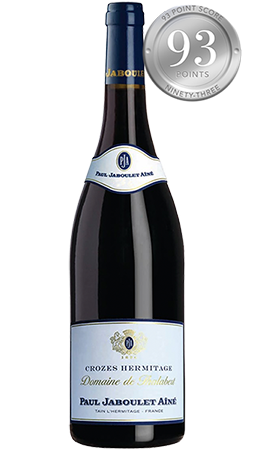
2019 Paul Jaboulet Aîné Crozes Hermitage Domaine de Thalabert (375mls available too)
“Seemingly refined by the additional elevage since I reviewed a barrel sample last year, the 2019 Crozes Hermitage Domaine de Thalabert remains a big, rich, dark-fruited, and almost tarry effort, but this full-bodied wine is pleasantly velvety and marked by savoury notes of scorched wood and black olive tapenade that linger on the finish. Drink 2023 – 2035”
93+/100 Points – Joe Czerwinski, Wine Advocate
92/100 Points – James Suckling
91/100 Points – Jeb Dunnuck
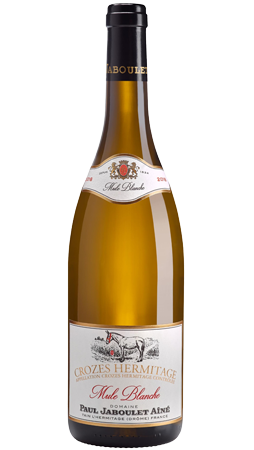
2019 Paul Jaboulet Aîné, Crozes-Hermitage Blanc, Domaine Mule Blanche
‘Already bottled, the 2019 Crozes Hermitage Mule Blanche (Domaine) harkens back toward the quality of the superb 2017, with gentle nutty complexities interwoven with crushed stone, spice, melon, and pear. Medium to full-bodied, this 50-50 blend of Marsanne and Roussanne from Les Chassis displays beautiful harmony and roundness while remaining long and crisp on the finish.” (Drink 2021 – 2028)
92/100 Points – Joe Czerwinski, Wine Advocate
92/100 Points – Jeb Dunnuck
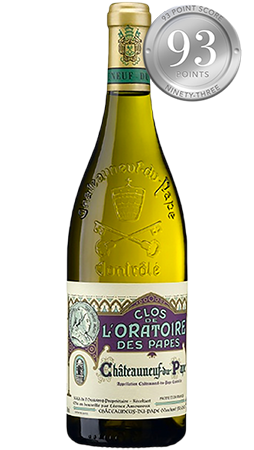
2018 Ogier Clos de L’Oratoire des Papes Blanc – Châteauneuf-du-Pape
25% Grenache Blanc, 25% Clairette, 25% Roussanne, 25% Bourboulenc.
“Fresh, meadow flowers, lemon blossom and a nicely played, savory thread of pastry and lightly toasted biscuits. The palate has impressive tension and restraint, the acidity and tannins working smoothly and in unison, to deliver length and freshness. Drink or hold.”
93/100 Points – James Suckling
“A near carbon copy of the excellent 2016 version, the 2017 Châteauneuf-du-Pape Blanc Clos de L’Oratoire des Papes is an equal-parts blend of Bourboulenc, Clairette, Grenache Blanc and Roussanne. One-fourth was barrel fermented—just enough to provide a sense of richness to the stone fruit and tangerine flavours, while finishing crisp, briny, and fresh.”
90/100 Points – Wine Advocate
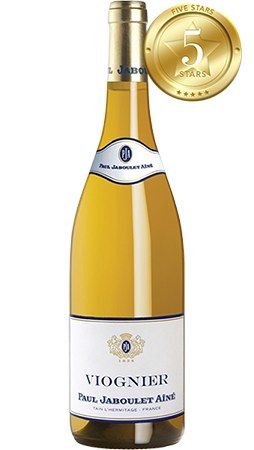
2019 Paul Jaboulet Aîné VDF Viognier
Jaboulet is nothing less than a cult Rhône wine label. And this Viognier is a real steal. It’s pure indulgence – a Condrieu in disguise at a fraction of the price. It’s aromatic, peachy and it’s also seriously fresh. Every part of the winemaking – from picking the very best grapes, to fermenting the juice in aroma-preserving stainless steel – has been designed to make each glassful as opulent and fragrant as you could wish for. It’s a curry’s dream partner – but also delicious alone.
A pale-yellow colour in the glass with lovely golden tints. The nose is open and expressive with notes of ripe pear and white flowers. On the palate, this wine is smooth, generous, and balanced. It shows classic restrained apricot and melon flavours. It’s medium bodied, with a clean refreshing finish and beautiful balance.
“The expertise that Paul Jaboulet Aîné has in working Viognier in Condrieu helps to produce this wonderful easy drinking Viognier. The wine comes from a very strict selection of grapes from a zone including the first Alpine and Cevenol elevations, but also near the Mediterranean Coast. Hence the fact that it is labelled as “Vin de France”. These grapes are from terroirs with soils rich in limestone and light in clay. The wine is matured on its lees in stainless steel vats for a few months, to retain both the complexity and the fruitiness of the grapes. This bright, floral, refreshing white won First Prize in the 2019 Japanese Oyster Wine Contest, as the best wine to pair with oysters! A Steal!!”
5 Stars – Wine Express – Josh Farrell
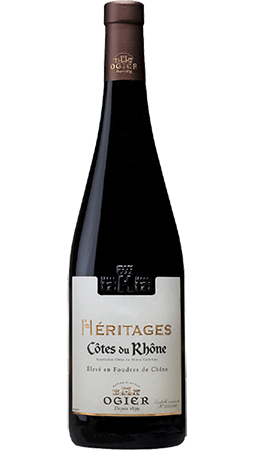
2019 Ogier, Héritages, Côtes du Rhône
“Aromatically discreet on the nose, not giving much away at this stage. Liquorice and blackberry can be coaxed out with air. Medium-bodied, dry, and upright style, the tannins are quite straight and a little reedy. I would give this another year. It’s good, not rich, but well made. An elegant style of Côtes du Rhône at an extraordinarily low price.” Drinking Window 2020 – 2023
89/100 Points – Decanter, Matt Walls
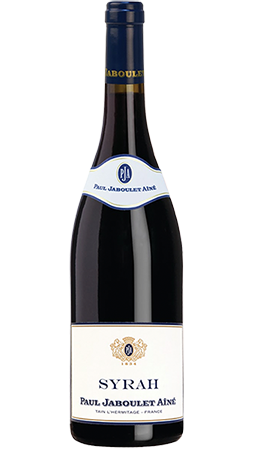
2019 Paul Jaboulet Aîné VDF Syrah
100% Syrah from vineyards in the Rhône Valley and the Languedoc. Sourcing the grapes from across a range of terroirs allows Jaboulet to create a well-balanced wine with consistent quality. It is matured without oak to maintain a supple and fruit-driven style. Medium-bodied with a fresh, juicy feel, this wine offers the classic Syrah characters of blackcurrant and liquorice, with subtle aromas of wild shrubs and pepper. Perfect accompaniment for herb-rubbed lamb chops, preferably chargrilled.
Fun Fact: Over time, Roman Catholic Popes became so enamoured with pairing Côtes du Rhône wines with food, they frequently shipped the wines to stock up their Cellars at the Vatican in Rome.
